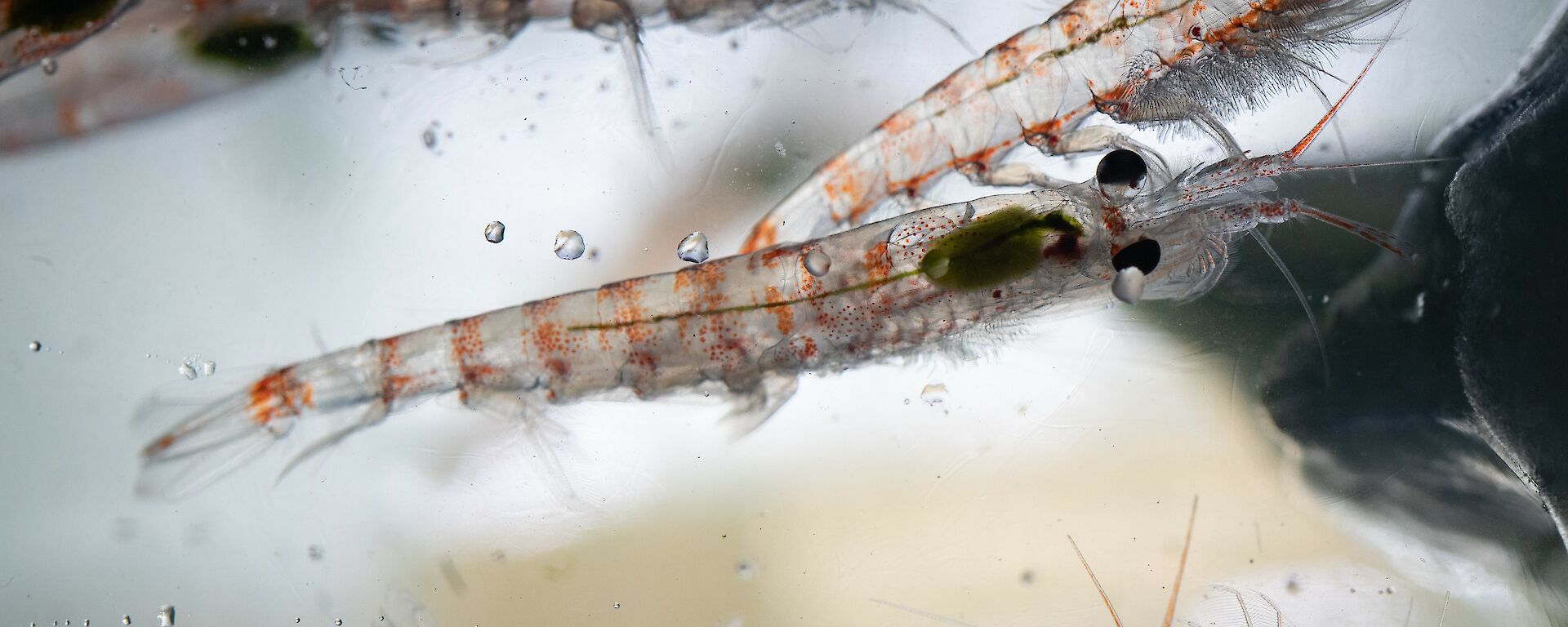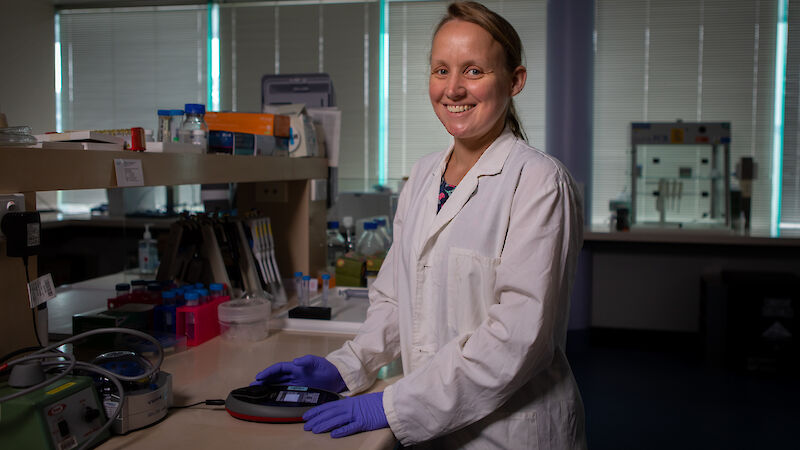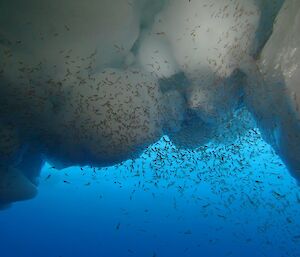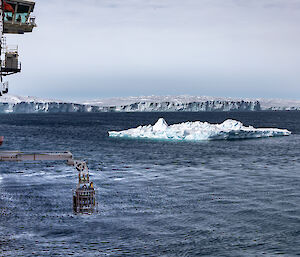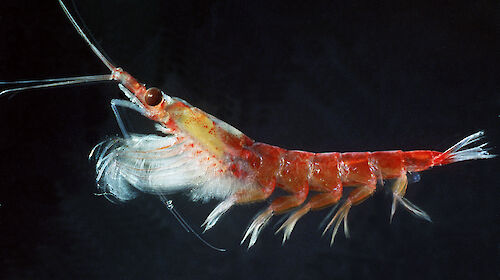The research, led by Australian Antarctic Division ‘environmental DNA’ analyst, Dr Leonie Suter, promises to provide insights into the ocean habitats krill prefer, including deep-sea and under-ice habitats that are difficult to study by other methods.
“There are many areas in the Southern Ocean where we are virtually blind when it comes to detecting krill,” Dr Suter said.
“The new technology we’ve developed allows us to estimate whether the DNA shed by krill moving through the water has been shed recently, or whether it is older.
“Being able to detect these shed DNA fragments will allow us to look in places we’ve never been able to look before.
“This could help us understand how krill are using these habitats, and contribute to more accurate abundance and distribution estimates used for fisheries management.”
Finding fragments
The technology relies on the fact that long strands of DNA, inside the cells of all organisms, begin to degrade or fragment into smaller pieces when the cells die and the DNA is released into the environment. In krill, this includes when they defecate and when they ‘moult’ and shed their hard exoskeleton.
“Recently-shed DNA occurs as longer fragments, while older DNA has degraded into smaller fragments,” Dr Suter said.
To take advantage of this, the team developed molecular markers that enabled them to identify whether water samples contained more of the longer ‘fresh’ fragments or the shorter ‘old’ fragments.
The ratio of short to long fragments in each water sample indicated whether the DNA was shed recently or not.
“With this new molecular method, if we take a small water sample from the seafloor, for example, we can detect the presence of krill from minuscule traces of DNA they leave behind,” Dr Suter said.
“If we detect a lot of long DNA fragments, then we could say that krill had likely been using that deep sea habitat recently.
“If we found more short fragments, then it’s likely this material has been floating around for a while, and could have come from somewhere else, including the surface.”
Krill fisheries management
Dr Suter said the method could assist krill fisheries management by allowing scientists to measure krill abundance and distribution in new habitats that are difficult for traditional ship-based measurement technologies to access.
“There’s increasing evidence that krill use the deep sea as an alternative habitat to the surface – where they feed on phytoplankton. But it’s hard to monitor the seafloor with acoustic instruments and trawls, as they are usually restricted to an area around the ship,” Dr Suter said.
“To manage krill fisheries effectively, we need to know how abundant krill are. But if you only ever measure krill on the surface, you could be missing a substantial proportion of animals in deep waters, so abundance estimates will not be accurate.”
Aquarium to Antarctica
The team developed the technique in laboratory experiments in the Australian Antarctic Division’s krill aquarium, before testing it on seawater samples collected during an Antarctic resupply voyage.
The team will now compare their DNA method with other krill survey methods, including acoustics and trawls.
“During a major krill survey off East Antarctica in 2021, we travelled through krill swarms and collected water samples between the surface and seafloor. We also tracked and measured the swarms using the ship’s acoustic instruments, trawl nets and visual sightings,” Dr Suter said.
“It will be interesting to use our DNA markers on the water samples to see how the results complement data collected by the other methods. Can we make direct comparisons?
“I’m really excited by the potential for this.”
The research is published in Environmental DNA.

